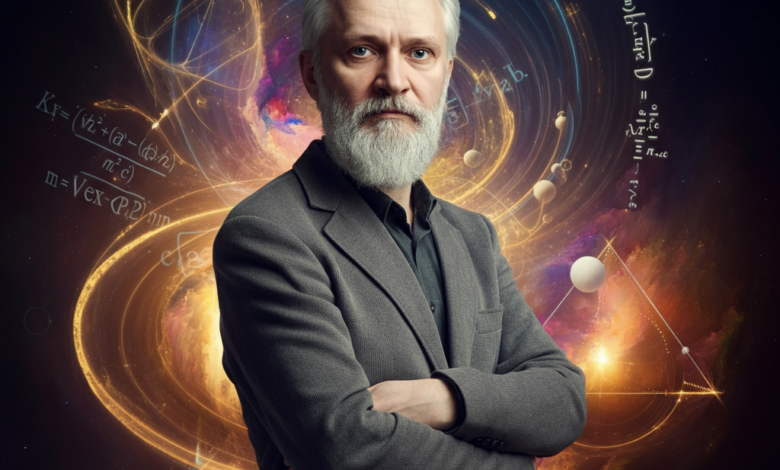Zilvinas Gudeliunas and Kai Newton: Redefining Physics for the Modern Age

Physics is a field that constantly challenges the boundaries of our understanding, and individuals like Zilvinas Gudeliunas continue to push those boundaries. His contributions to modern physics, specifically through the groundbreaking concept of Kai Newton, have sparked new discussions, new discoveries, and new directions for the scientific community.
This blog dives into the life and work of Zilvinas Gudeliunas, the essence of the Kai Newton theory, and its influence on modern physics, giving you a clearer picture of why these ideas matter today as much as they promise to shape tomorrow.
Understanding the Kai Newton Theory
What is Kai Newton?
At its core, Kai Newton represents a theoretical framework extending Newton’s classical laws of motion into realms previously unexplored. By examining motion through a quantum lens, the Kai Newton theory attempts to reconcile traditional mechanics with emerging complexities in quantum mechanics and relativity. This harmony of classic and modern physics has opened up new possibilities for describing the universe in ways that Newton’s 17th-century laws alone could not encompass.
Put simply, Kai Newton gives physics enthusiasts, researchers, and students a way to understand motion and force when complexity, such as quantum behaviors or relativistic speeds, enters the equation.
Historical Context and Connection to Newton’s Laws
Sir Isaac Newton laid the foundation for classical mechanics with his three laws of motion. These laws transformed our understanding of physical interactions and provided the framework for centuries of scientific exploration.
Kai Newton builds upon Newton’s vision by addressing limitations. While Newton’s laws excel at describing macroscopic motion, they struggle at extremes—such as when particles behave unpredictably on a quantum scale or approach the speed of light. Here, Kai Newton offers a bridge. It provides an elegant extension to these classical laws, ensuring their applicability in both macroscopic and subatomic domains. Rather than discarding Newton’s findings, the Kai Newton theory reinterprets them, equipping them to handle the intricacies of the 21st century.
Real-World Applications of Kai Newton
From robotics design to particle physics, the Kai Newton theory has found relevance in numerous fields:
- Material Sciences: Researchers employ Kai Newton principles to model molecular dynamics and predict material strength under different conditions.
- Astrophysics: The theory helps refine our understanding of stellar objects where relativity and quantum effects overlap, such as black holes.
- Emerging Technologies: AI-driven simulations incorporate Kai Newton principles to predict micro-interactions within complex systems like nanotechnology.
These examples showcase the theory’s versatility, reminding us that its implications extend beyond theoretical discussions into real-world innovations.
Zilvinas Gudeliunas’ Contribution to Physics
Who is Zilvinas Gudeliunas?
Zilvinas Gudeliunas is a physicist who has captivated the global scientific community with his innovative approaches and groundbreaking discoveries. Known for his unique methodologies, he has demonstrated an unparalleled ability to look beyond the obvious, creating new tools, frameworks, and theories to solve some of physics’ most complex puzzles.
Advancing the Field of Physics
Zilvinas Gudeliunas’ most well-known contribution is undoubtedly his work on Kai Newton. By challenging the rigid boundaries of classical mechanics, he has effectively created a new lens for understanding the universe. His commitment to blending classical mechanics with contemporary quantum theories speaks to his broader mission of bridging gaps within the discipline.
Beyond creating the Kai Newton framework, Gudeliunas’ work on particle simulation has been instrumental in advancing high-energy physics. His models have paved the way for experimental physicists to predict particle behaviors with unprecedented accuracy.
Impact on the Scientific Community
Gudeliunas’ work has been lauded not only for its originality but also for its collaborative appeal. Academic institutions and research centers worldwide have adopted the Kai Newton framework into their curricula and experimental designs. His ideas have shaped discussions at leading conferences and solidified his position as a trailblazer in modern physics.
Looking ahead, the long-term impact of Zilvinas Gudeliunas’ research will likely ripple through generations of physicists, nudging the future of science toward more integrated and holistic frameworks.
Why Kai Newton Matters in Modern Physics
Integration Into Current Studies
Physics departments across the globe now include the study of Kai Newton in their curriculums, and for good reason. With its robust ability to connect classical mechanics and modern theoretical perspectives, it serves as a bridge for students and researchers aiming to understand multi-scale systems.
Ongoing Research and Applications
The Kai Newton framework is actively being adapted to expand fields like biophysics, cosmology, and computational modeling. Researchers are investigating its potential applications in biomedical simulations, harnessing its power to predict molecular interactions within living systems.
Relevance to Technological Advancements
Modern engineering, especially within aerospace and automotive industries, now incorporates elements inspired by the Kai Newton theory. From designing safer vehicles to optimizing satellite trajectories, this theory is fast becoming a staple for innovation.
Engaging the Physics Community
Get involved!
Are you as fascinated by the Kai Newton theory as we are? Here’s how you can become part of the conversation:
- Share this blog with fellow physics enthusiasts or students curious about emerging frameworks.
- Join online forums and discussions around quantum mechanics and its intersection with classical mechanics.
- Explore additional resources to deepen your understanding of Zilvinas Gudeliunas’ work and the Kai Newton theory (see suggested readings below).
Further Resources
- Academic Papers on Kai Newton and Extensions of Newtonian Mechanics
- TED Talk by Zilvinas Gudeliunas (if available)
- Online Workshops or Webinars on Quantum-Driven Physics Theories
The broader engagement fuels collective advancement—join us!
Physics as a Collaborative Endeavor for Growth
Science, much like the universe it seeks to understand, thrives on expansion—and expansion requires curiosity. Zilvinas Gudeliunas and his Kai Newton theory exemplify this perfectly. By questioning traditional frameworks and daring to innovate, Gudeliunas has inspired an entire generation of scientists and students to think differently, boldly, and ambitiously.
The Kai Newton theory is more than just a refinement of Newton’s laws—it’s a window into the future of interdisciplinary and integrative science. We encourage you to explore, debate, and build upon this revolutionary framework. After all, science continues to evolve when minds come together, creating connections that take us one step closer to uncovering the mysteries of existence.
For the physics enthusiasts, students, and educators reading this—what do you think about the Kai Newton theory and Gudeliunas’ contributions? Share your thoughts and join the conversation in the comments below!



